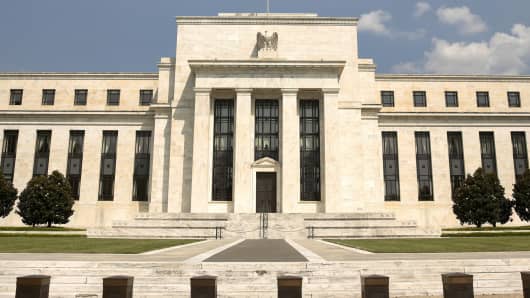Employment, in particular, is a difficult part of the mandate. Monetarists have often objected to that. They argue that the monetary policy can only provide an environment of price stability in which demand, output and employment creation can take place.
But the mandate is still there, and employment is always a politically-charged issue. Consider, for example, the fact that the current labor market numbers are not as good as implied by the reported 5.1 percent unemployment rate.
Adding 6.5 million involuntary part-time workers (people working part-time because they cannot get a full-time job) and 1.8 million people who are marginally attached to the labor force (mainly people who quit looking for a job because they could not find one), gives an actual unemployment rate that is more than double the official 5.1 percent rate. That also means that the actual number of unemployed is 16.3 million, rather than the reported 8 million.
The high numbers of America's long-term unemployed (people out of work for 27 months and over) are reflecting current labor market difficulties as well. These numbers have been increasing since last June to reach 2.2 million at the end of August, accounting for nearly one-third of the reported unemployment.
Read MoreGlobal markets unconvinced by Fed inaction
A similar note about America's soft labor markets is sounded by average hourly earnings; they were roughly unchanged over the three months to August.
The Fed can't control trade and labor policies
Now, let's bring back into discussion that 1 percentage point that our foreign trade deficit will knock off the growth of our domestic demand. Even the convinced free traders – of which I am one – have to admit that the immediate effect of that will be job losses in our import-competing industries. The long-term dynamic effects of free trade may well be positive for the world economy as a whole, but that is of little consolation to retrenched workers and bankrupt companies.
What can the Fed do about that? Print more money?
The Fed's critics, and American bankers threatening to begin laying people off if the Fed does not promptly oblige with higher interest rates, should understand that there is nothing the U.S. monetary authorities can do about Asians' unrelenting quest for export-led growth, and the European chaos of mean fiscal austerity policies and biblical refugee crises.
There is also nothing the Fed can do about structural problems in U.S. labor markets. Only broad and active structural policies – e.g., better and more affordable education, labor force retraining and relocation – could make more people employable in an economy which, thanks to the Fed, is already pushing well above its physical limits to growth.
Foreign trade and labor market policies are the responsibilities of the federal government.
It is not up to the Fed to negotiate better market access to American companies in foreign countries, or to make sure through various G forums (G7, G20, etc.) and multilateral organizations, such as the IMF and the OECD, that economic policies are properly coordinated in order to ensure a fair and a more balanced international trade.
And neither is it the Fed's fault that East Asia and the euro area are currently running trade surpluses of $700 billion and $320 billion, respectively, and acting as a huge drag on world economy – extracting that 1 percentage-point gift from the growth of the U.S. domestic demand.
The Fed just has to compose with all that, and to calibrate its policy in order to minimize the negative effects on U.S. growth and employment of this extremely unbalanced situation in global trade flows.
The sad part is that none of these vitally important issues for American economy and security are even mentioned, let alone debated, in the presidential primaries of either party – except for some rather folkloric utterances by Donald Trump, who keeps screaming "they are robbing us blind," and who would treat the Chinese president to a Big Mac instead of a glittering state dinner at the White House.
Read MoreCould negative rates be next on the Fed's policy menu?
Somebody has to mind the store. It is easy to criticize the Fed for everything, especially if the Dow does not keep soaring. But the Fed's critics have to understand that economic growth, employment creation and a sound investment environment are a result of an entire policy mix - monetary, fiscal and structural (or regulatory) policies – that is supposed to guide an open economy toward an optimal utilization of its (physical) capital and labor resources.
Investment thoughts
Having missed the September deadline for the Fed's interest rate increase, the wise-guys are now taking what they call "a December liftoff" as an obvious certainty.
Investors, as opposed to traders, should pay no attention to that. People confidently predicting a September rate hike have shown that they can't even read an open book that is called the Fed.
The Fed will exercise its mandate as a function of events whose outcome is unknowable ex-ante. The Fed is watching these events like the rest of us. When the data begin signaling the desirability of a policy change, the Fed will adjust its instruments in a manner that will carefully prepare its next move.
So far, the Fed sees nothing that would warrant that kind of action.





